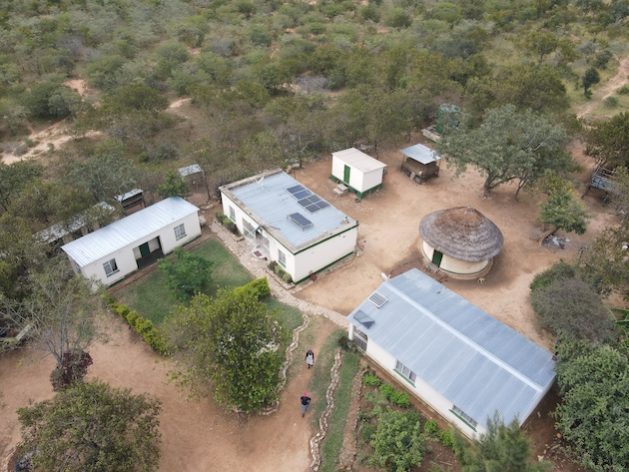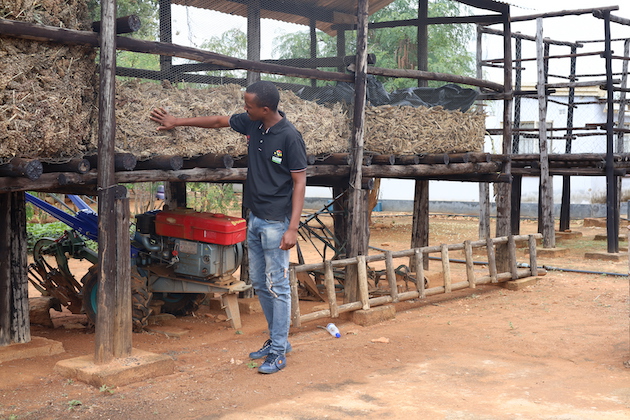Sweden’s NATO membership took a step forward at the Vilnius summit when Turkiye signalled that it would back the application. Tom Waldwyn explores the implications for the country’s defence industry.

This blog post was first published on the Military Balance+ on 27 July 2023
Sweden’s defence industry received a potential boost from Turkiye’s recent signal that it will finally back the country’s application for NATO membership, but there are still several issues that the sector needs to address.
Sweden surprised many, both inside and outside the country, when it announced in May 2022 that it would seek NATO membership after decades of formal non-alignment. The country was already close to many Alliance members and its defence industry, particularly Saab, counted some of them among its customers – Hungary and the Czech Republic acquired the JAS-39 Gripen in the early 2000s, for example. But as Saab CEO Micael Johansson put it when presenting the company’s Q2 Report 2023 on 20 July, ‘being NATO is of course a different thing’.
Saab is offering to the NATO Alliance Future Surveillance and Control project the GlobalEye airborne early-warning and control aircraft – already ordered by the United Arab Emirates and Sweden – as a potential replacement for the Boeing E-3A Sentry. Sweden’s NATO membership would probably boost the company’s chances of landing the deal, though it would still be a challenge to displace Boeing, which is offering the E-7 Wedgetail, and Johansson acknowledged that Saab’s offer would still have to be competitive.
The Swedish defence industry is export-oriented – with 58% of Saab’s total sales revenue coming from foreign sales, for example – and easier access to NATO-member markets would be particularly valuable given that NATO members (excluding the United States) are this year expected to spend an aggregate of more than USD119 billion on equipment. But there has been discussion in Sweden concerning the need for a revised defence-industrial strategy to address the new political reality. As part of that process, Swedish policymakers and industry officials would have to consider several questions that have not been addressed in recent policy documents.
During the Cold War, Sweden maintained a broad and capable defence industry that fulfilled most equipment requirements even if in some areas it relied on foreign technology, such as US jet engines. The industry still has strengths in combat aircraft, surface- and subsurface-vessel design and construction, sensors, guided weapons, infantry anti-tank weapons and training systems (Saab); tracked armoured vehicles (BAE Systems Hägglunds); munitions and gun systems (Nammo and BAE Systems Bofors); and engine components and aerostructures (GKN Aerospace).

But while NATO membership promises much, it does not obviate some difficult issues for Sweden’s defence industry, particularly in the combat-aircraft domain. In 2013 Saab sold the new Gripen E standard of the single-engine fighter to Sweden, but since landing Brazil as an export customer in 2014, no other export deals have emerged. The Gripen-operating Czech Republic opted in 2022 for Lockheed Martin’s F-35A Lightning II as its future combat aircraft, though Saab still holds out hope of retaining Prague as a customer. It is also chasing a deal with Hungary and a follow-on order in Brazil, while trying to land Colombia and the Philippines as new Gripen operators.
There is also a lack of clarity regarding Sweden’s approach on next-generation combat aircraft, at a time when countries including France, Germany, Japan, the United Kingdom and the US are pursuing development paths. Sweden in 2019 signed an agreement with the UK to partner on future combat-aircraft technologies, but it has not joined the Italy–Japan–UK sixth-generation Global Combat Aircraft Programme – Johansson remarked last year that Sweden’s participation in the broader UK-led Future Combat Air System effort was ‘in a sort of hibernation’. Sweden risks being left out in terms of contributing to design efforts and could find its workshare opportunities limited if it commits late to one of the programmes already under way.
Funding and cost questions also hang over the industry. Sweden has taken measures to bring forward from 2028 to 2026 its target date for defence spending to reach 2% of GDP, but inflationary pressures are already eating into what extra money can buy. And high demand for military goods – driven largely by the war in Ukraine – creates cost pressures in addition to sales opportunities.
Sweden’s arms-export policy also remains in flux. The country several years ago adopted more restrictive guidelines on arms exports, which halted deals with Turkiye. As part of its effort to win Ankara’s backing for its NATO accession, Stockholm has since lifted the restrictions on the country.
More clarity could emerge next year when a Swedish parliamentary defence committee is due to issue a report about what capabilities will be needed to cope with the new threat environment.
Despite these issues, Johansson’s Q2 presentation struck an upbeat tone about the outlook for the defence sector, given the progress on NATO membership: ‘I think it’s a very positive step... This will mean that we’re committed to the Alliance long term, and that includes the industry.’
Tom Waldwyn@twaldwyn
Research Associate for Defence Procurement
Tadhg Pidgeon
4 August 2023
The Irish Prime Minister, or Taoiseach, Leo Varadkar has said his country must “do more” to defend its territorial waters from potential Russian threats.
That is despite of the fact that the nation lacks a significant naval force.
The comments come as many countries with coastal waters in the European Union are increasingly nervous over their seaways, fearing that covert conflict might spill over from Russia’s war with Ukraine.
While countries such as Norway are ramping up efforts to defend their gas pipelines, Ireland seems to be sitting on its heels somewhat.
Speaking to the Financial Times, Varadkar made vague remarks about “working with … partners” and making undersea assets “harder to sabotage”, although he appeared to offer little explanation as to how his government might do that.
Following the sabotage of the Nord Stream 2 Pipeline in the Baltic Sea, EU Member States are concerned about the safety of the bloc’s underwater infrastructure.
In June, Kremlin heavyweight and former Russian President Dmitry Medvedev advocated for Russia to destroy Europe’s undersea communication cables.
Alarm bells rang in Ireland as a significant share of those cables run through the country’s territorial waters. These cables give Europe most of its telephone and internet connections with the Americas and elsewhere.
Yet Ireland may not be up to the task of defending these vital assets as it only spends a fraction of a per cent on its defence forces.
Last year it was reported that the Irish Navy was made up of a little over 800 servicemen, more than 200 short of the 1,094 minimum required for it to function properly. Members of the Irish security forces have said several of its Navy’s six fighting ships have to remain in dry dock as there are not enough sailors to man them.
Speaking to Irish media, the head of the Irish Defence Forces Lieutenant General Seán Clancy admitted that the nation’s military and navy were undergoing a challenging time and were struggling with recruitment.
In Spring, Irish Deputy Prime Minister Micheál Martin – Varadkar’s ally in the coalition government – said the Irish navy would “never be in a position … to engage in submarine warfare”.
The comments led some to accuse Varadkar of relying on neighbouring countries to take up the slack regarding Irish defence.
Whereas Russia’s invasion of Ukraine has made NATO popular in EU countries such as Sweden and the Finland, the alliance enjoys less support in Ireland.
Story by Reuters •

FILE PHOTO: Russian President Vladimir Putin visits a plant of missile manufacturer Almaz-Antey in St Petersburg© Thomson Reuters
LONDON (Reuters) - Russia has doubled its 2023 defence spending target to more than $100 billion - a third of all public expenditure - a government document reviewed by Reuters showed, as the costs of the war in Ukraine spiral and place growing strain on Moscow's finances.
The figures shed light on Russia's spending on the conflict at a time when sector-specific budget expenditure data is no longer published.
They show that in the first half of 2023 alone, Russia spent 12%, or 600 billion roubles, more on defence than the 4.98 trillion roubles ($54 billion) it had originally targeted for 2023.
Defence spending in the first six months of 2023 amounted to 5.59 trillion roubles, 37.3% of a total 14.97 trillion roubles spent in the period, the document showed. Russia's budget plan envisages 17.1% of total funds spent on "National Defence".

FILE PHOTO: Russian President Vladimir Putin visits the Shcheglovsky Val machine building plant, in Tula© Thomson Reuters
Russia's government and finance ministry did not respond to requests for comment on the numbers.
Rising war costs are supporting Russia's modest economic recovery this year with higher industrial production, but have already pushed budget finances to a deficit of around $28 billion - a figure compounded by falling export revenues.
Higher spending on defence, as Moscow prosecutes what it calls a "special military operation" in Ukraine, could widen the deficit further, while the boost in output could cannibalise other sectors and crowd out private investment.
Reuters calculations based on the document showed that Russia had spent 19.2% on defence in the first six months of all initially planned budget expenditure for 2023 as a whole.
The last publicly available data showed Moscow had spent 2 trillion roubles on the military in January and February. In the first half of this year, budget expenditure was 2.44 trillion roubles higher than the same period of 2022. Based on the document, 97.1% of that extra sum was directed to the defence sector.

FILE PHOTO: Russia's Deputy head of the Security Council Medvedev visits a plant in Tula region© Thomson Reuters
The document provided a new estimate for annual defence spending of 9.7 trillion roubles, one third of the total spending target of 29.05 trillion roubles, which would be the highest share in at least the last decade.
Between 2011 and 2022, Russia spent a minimum of 13.9% and a maximum 23% of its budget on defence.
Russia has already spent 57.4% of its new annual defence budget, the document showed.
FULL CAPACITY?
Military production has driven a strong recovery in industrial output, and analysts say that state defence contracts have been a key driver in Russia's economic recovery to GDP growth so far this year from a 2.1% contraction in 2022.
Specific defence funding falls under closed expenditures, but some data, though no longer public, is circulated. For example, the document shows that Russia spent almost 1 trillion roubles on military salaries in the first half, 543 billion roubles more than in the same period last year.
Deputy Prime Minister Denis Manturov said in July that the defence industry was now producing more munitions each month than it did in the whole of 2022.
Funding for schools, hospitals and roads was already being squeezed this year in favour of defence and security, but as the share of defence spending grows, other areas could face cuts.
"The military industrial complex is enabling industrial growth, 'civilian' industries are slowing down again," said Dmitry Polevoy, head of investment at Locko-Invest, after last week's industrial output data for June.
That showed a 6.5% year-on-year increase, largely thanks to last year's low base effect. When excluding seasonal production, growth stopped altogether.
CentroCreditBank economist Yevgeny Suvorov said the military industry was running at full capacity.
"We don't know what the potential for a further increase in the output of tanks and missiles is," Suvorov said on his MMI Telegram channel. "But we know that increasing this output even further is possible only at the expense of haemorrhaging more staff from other sectors of the economy."
Net exporter Russia typically posts budget surpluses, but will post a deficit for the second year running, with the value of energy exports down 47% year-on-year in the first half.
Higher budget spending adds to inflation risks. The central bank hiked rates to 8.5% in July and analysts expect the cost of borrowing to rise further.
The Bank of Russia forecasts GDP growth at 1.5%-2.5% this year, in line with analysts polled by Reuters last week. The International Monetary Fund in April forecast 0.7% growth this year, but with global isolation to dampen Russia's prospects for years to come.
"Abundant fiscal 'steroids' are helping fairly well for now, but are hardly improving the economy's medium- or long-term position," said Polevoy. "As soon as fiscal consolidation becomes unavoidable, there will be a rapid economic slowdown."
(Reporting by Reuters; Editing by Mike Collett-White and Philippa Fletcher)








